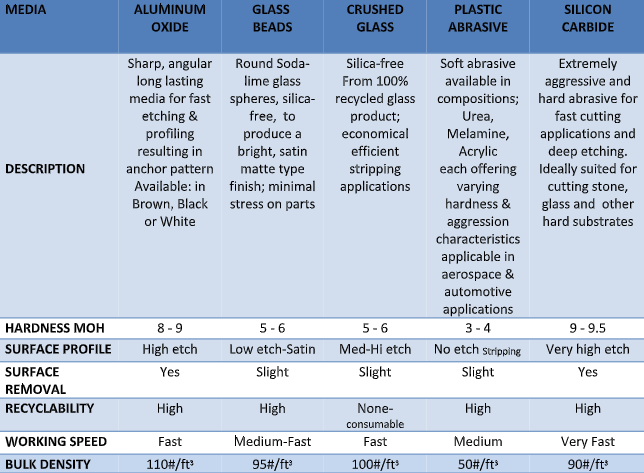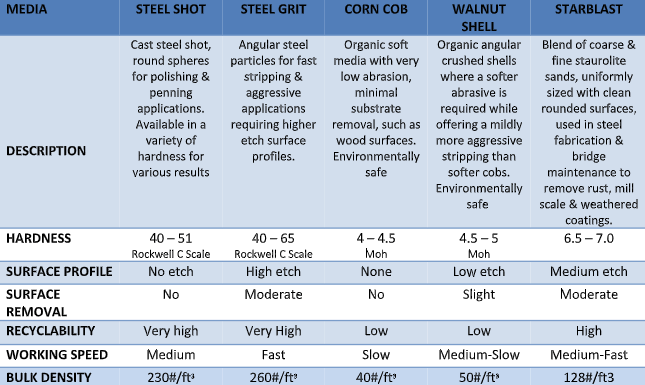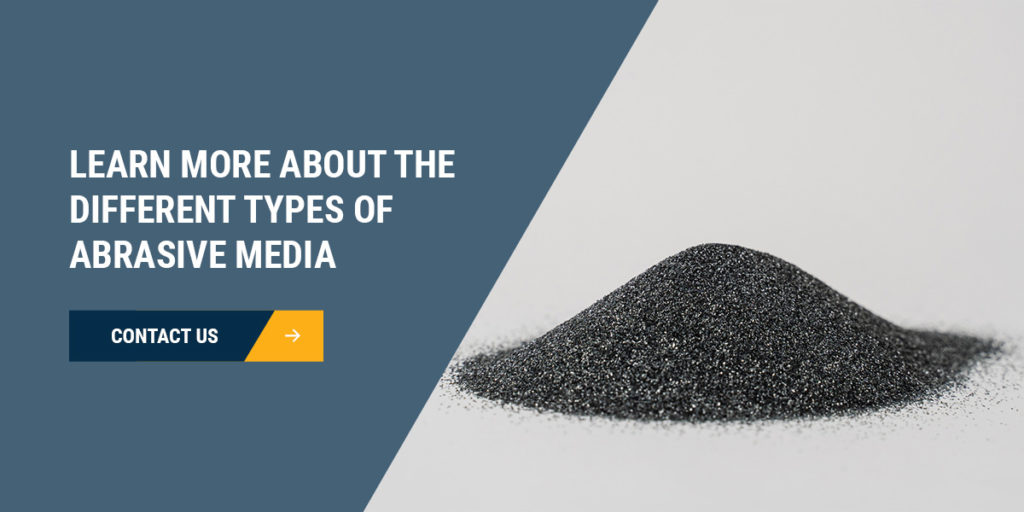Types of Abrasive Materials
March 07, 2023When working with metal components, it's common to encounter impurities or imperfections that either occur naturally or result from manufacturing processes. These issues can complicate the application of coatings or other essential finishing steps, ultimately affecting the quality of the final product.
Abrasive blasting is an effective method for removing unwanted materials and preparing surfaces for further processing. This technique involves using high-pressure water mixed with abrasive media to blast away contaminants like dirt, oil, grease, and chemicals, resulting in a clean and properly prepared surface.
There are various types of abrasive media available, each with its own set of benefits and limitations. Choosing the right one depends on the specific needs of your project, including the material being treated and the desired finish.
What Are the Different Types of Abrasive Media?
Below is an overview of the most commonly used abrasive media, along with their typical applications and characteristics:

- Glass Beads: Glass beads are a softer abrasive option compared to materials like steel shot or silicon carbide. They are ideal for achieving a bright, smooth finish and are often used on stainless steel. They can also be recycled multiple times, making them a cost-effective choice.
- Aluminum Oxide: Known for its high hardness and durability, aluminum oxide is widely used in industrial applications such as anti-slip surfaces, refractories, and surface preparation before painting. It’s capable of deep etching, which makes it suitable for preparing substrates for coatings.
- Plastics: Plastic abrasives are made from crushed urea, polyester, or acrylic and come in a variety of hardness levels and particle sizes. They are ideal for cleaning molds, plastic parts, or delicate surfaces where minimal material removal is required. Common industries include automotive, aerospace, and electronics.
- Silicon Carbide: As the hardest abrasive available, silicon carbide is perfect for heavy-duty applications requiring deep etching and precision. It is used in lapping, polishing, glass etching, and general-purpose blasting. Its high performance comes at a premium, but it offers excellent results in tough conditions.

- Steel Shot & Grit: Steel abrasives are known for their toughness and recyclability, making them a cost-effective option. They are used for removing contaminants, texturing surfaces for better coating adhesion, and in peening applications. The size, shape, and hardness of the media play a key role in selecting the right type.
- Starblastâ„¢: Starblast is a natural blend of staurolite sands with low silica content, making it ideal for general blasting applications. It effectively removes rust and scale from steel while minimizing dust, improving visibility during the process.
- Walnut Shells: Made from crushed walnut shells, this is a soft abrasive used for polishing delicate surfaces like wood, plastic, and soft metals. It’s also used in tumbling operations for polishing jewelry and gemstones.
- Corn Cobs: Corn cob abrasives are made from the woody part of corn cobs and are among the softer natural abrasives. They are ideal for cleaning, deburring, and de-flashing applications in industries such as jewelry, cutlery, and automotive parts.
The Evaluation Criteria
Choosing the right abrasive media involves considering several factors that affect performance and outcome:
- Hardness: Measured on the Mohs Scale, hardness determines how well the media can scratch the surface. This is crucial when working with softer materials.
- Surface Profile: The size, shape, and density of the abrasive media determine the profile it creates on the surface, ranging from no etch to a high-profile texture.
- Surface Removal: Understanding how much of the substrate will be removed is essential to meet project specifications and avoid over-abrasion.
- Recycling: Some media can be reused, which helps reduce costs and environmental impact.
- Working Speed: Some abrasives work faster than others, which can influence productivity and efficiency.
- Bulk Density: The weight of the abrasive per cubic foot affects its cleaning power and the depth of the surface profile it leaves behind.
Learn More About the Different Types of Abrasive Media
Finishing Systems provides a wide range of sandblast media options, including various grit sizes and packaging choices to suit your business needs. Our products are designed to deliver consistent quality and performance, helping you achieve the best results for your projects.
If you're unsure which abrasive media is right for your application, our team of experts is here to help. With years of experience in the industry, we can guide you through the selection process and ensure you make an informed decision.
For more information or assistance with your abrasive media needs, contact us today. We’re committed to providing reliable solutions and answering all your questions efficiently.

Automotive Molding Parts,Automotive Plastic Components,Automotive Plastic Part,Automotive Injection Molding Parts
Wisegroup Precison Mold Ltd , https://www.wisegroupasia.com